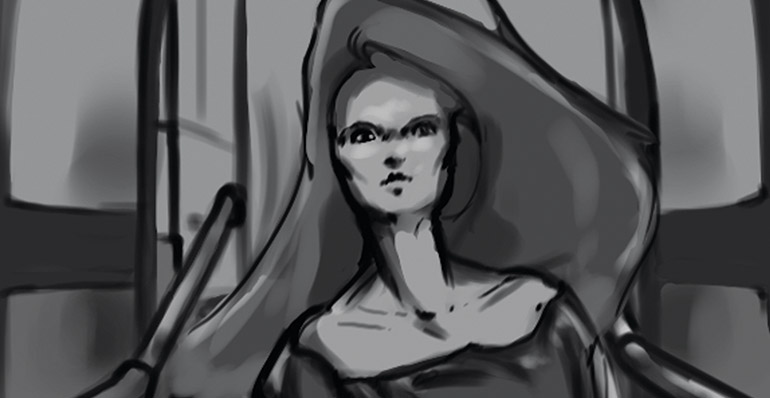A haunted tour of London and area

The London-Middlesex region is rich with history. From the invention of insulin to the Western Fair, London’s history is definitely worth exploring. But this area is also known for its ghost stories and spooky tales. In honour of the Halloween season, let’s go through some of the creepiest stories that define this region.
1. The Victoria Day Tragedy, 1880
On May 24, 1881, three steamboats were heading up the Thames River carrying passengers celebrating the birth of Queen Victoria of England. They were heading back to London after spending time outside the city celebrating at a nearby park, unaware of the unfortunate demise that lay waiting for them ahead.
The ship, Victoria, was overfilled with more passengers than she could carry, but the crew was unaware. Passengers aboard all gathered to one side of the boat where they began looking over the rails and waving to people ashore at a park nearby. The boat then began to teeter due to the uneven weight of the crowd and moments later the ship capsized, dragging people down with it. Onlookers rushed to rescue the screaming victims, struggling to keep afloat. By the end of the ordeal, 198 people perished and were buried in the two cemeteries close by the site where the ship sank.
Following the tragedy, some paranormal incidents have been reported. Local London historian, Dan Brock, recalled two stories connected to the sinking of the Victoria, one involving a dream a servant girl had the day before the wreck happened.
“I was giving a talk about 15 years ago at one of the branches of a public library,” Brock said. “After I am finished, I always ask if anyone may have any questions or comments. This woman stood up and said she knew of a story of a dream an Irish servant girl had. She lived with an upper-middle-class family and the mother and father were taking a train to visit relatives in Detroit. So, they left the servant girl some money to take the kids on the boat. The night before, the girl had dreamt something terrible was going to happen at Springbank Park and because of this dream, she absolutely refused to take the kids.”
The second story involves a reported sighting of a woman in a black Victorian-era dress around The Coves, about a block away from the site of the tragedy.
Some debris from the ship is still visible to this day during low tide and the original anchor that was on the Victoria is present on a heritage plaque located along the shore near where the ship sank.
2. Battle of Longwoods, 1814
Highway 2 heading out of London towards the town of Chatham cuts through the site of the battlefield where the Battle of Longwoods took place in the War of 1812. In terms of the war, this battle played a significant role in preventing the American army’s progression from the west into Upper Canada. In March of 1814, the British army, volunteers and First Nations partners were given short notice to march 20 miles in heavy winter conditions from Delaware to Strathburn. In the midst of their travels, they were ambushed by American forces in a surprise attack. The American force dealt them heavy damage, causing the British and their allies many casualties. The British army made a hasty retreat but didn’t leave the American force feeling courageous. Worried that the British would come back with larger combatant force, Captain Andre Holmes, of the American army, decided to abandon his post in Delaware and move back onto American soil.
There are many common reports of people hearing and seeing the faint apparitions of soldiers marching, yelling orders, and the light crackle of musket fire in the distance, but there are two unique stories that War of 1812 reenactor, Glenn Scott, mentioned. Scott said that on the Bicentennial anniversary of the Battle of Longwoods in 2014, during the memorial service that was being held, a fellow reenactors expressed feeling the presence of the fallen soldiers watching them.
“At the site, we did the reenactment of the battle for the Bicentennial in 2014, and we closed the highway down. We had about 250 reenactors there and about 700 people watched it. [One reenactor] had a feeling that there were ghosts there and he wrote a poem about it,” said Scott.
There’s also the story of the ghost of a soldier named Patrick Graham, who was a part of the British forces. Graham was one of the 14 casualties who perished that day during the battle. The story goes that the ghost of Graham appeared to fellow comrades of his at Fort George located in what is now the Niagara peninsula, who did not know of his demise.
“This is just a taste of London’s spooky past, but there are various other stories that highlight London’s haunted history, from the haunting of The Grand Theatre to the reported ghost sightings at the famous Banting House.”
3. Victoria Park Garrison, 1830s
In the heart of downtown London is Victoria Park, which at one point was the site of an army garrison established by the British Government. The reason was for the British to have an established defense position against border raids during the Upper Canadian Rebellion of 1837. A short time after the war, the troops were withdrawn and shipped off to fight in the Crimean War in 1853. Meanwhile, in their absence, the garrison was used to house slaves during the Underground Railroad. By the 1860s, the troops were brought back to the garrison and placed there in case of American Civil War reaching Canadian soil.
During the 1830s, there was one soldier who was stationed at the garrison and his name was lieutenant Wenman Wynniatt. Wynniatt was partners with a daughter of Eldon House owner John Harris, Sarah Harris. Harris extended an invitation out Wynniatt to attend a party at the house. Harris waited for the arrival of the lieutenant for hours hoping he would show. When he did eventually “appear,” he was acting rather strange. It’s believed that what she actually saw was just a ghost, because Wynniatt, unbeknownst to her, had already died by that point.
A written account recorded by an author from England that gave Harris’ interaction with the lieutenants’ ghost, states, “a ghost appeared at a ballroom and was seen by four persons at one time, the lady was expecting her partner at the ball and was waiting indeed for his coming presently. As she was standing and talking to three gentlemen, they saw [Wyniatt] come into the room, look calmly and steadily at her and pass into the dining room. She thought it strange that he did not come to speak to her and alluded to it to the other gentleman. Laughing, she followed him into the dining room where to her surprise, he was not there.”
The next morning, Harris’ father came to her questioning whether or not she saw Wynniatt at the party and she confirmed that she had. Afterwards, her father told her that Wynniatt’s body had been recovered from the Thames River, and that his pocket watch read 10:15, the exact time Harris saw him the night before in the ballroom of Eldon House.
4. The Black Donnellys, 1880
On Roman Line Rd., lived the Donnellys, an Irish immigrant family who were known troublemakers and land squatters. Their schemes gave them a bad reputation in the Lucan-Biddulph community, which caused many to dislike them.
One cold winter night in February of 1880, a vigilante group was formed, containing those who strongly opposed their presence in the community. The mob marched onto the Donnelly property and committed unspeakable deeds to the family in the middle of the night. Everyone perished in the massacre but one Donnelly, a son named William Donnelly.
There have been numerous reported paranormal incidents that have occurred on the property. The apparition of matriarch of the family, Johanna, is reported to have walked around the halls of the home, smacking a bat against her open palm. She used to use that bat to discipline her boys when they misbehaved. At the time, when the homestead was open for walking tours, many visitors felt the uneasy feeling of being watched as they toured the property, with many feeling the presence of a man watching them in the barn.
This is just a taste of London’s spooky past, but there are various other stories that highlight London’s haunted history, from the haunting of The Grand Theatre to the reported ghost sightings at the famous Banting House.

